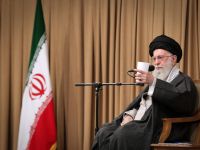A coffin and a mausoleum have been unearthed which may have contained leaders of the ancient Jewish monastic community that produced the Dead Sea Scrolls, reported The Times.
Archaeologists have been digging in the barren hills overlooking the Dead Sea, only a few hundred yards from the Qumran caves where the scrolls were found in 1947, says the report.
In a previously undiscovered cave the team also found a mat and fabric woven from goat's hair, which may shed some light on its inhabitants in the 1st century AD.
While Israeli archaeologists say that the new find is intriguing, they will probably never know who was buried there.
Hanan Eshel, a professor at Bar Ilan University, Tel Aviv, was quoted as saying that the grave was located a year ago using radar but that grave robbers, who presumably saw the archaeologists surveying the area, had already plundered the site by the time excavations began.
"We were able to take out what the robbers had left us, which was the bottom of the coffin, and it was very interesting," said Professor Eshel, one of the co-directors of the US-Israeli dig. "The coffin was made out of zinc, and this is the first time that we have such an object.”
The burial is being associated with the Qumran monastery and with the Essene sect which had long been thought to have occupied it. The Dead Sea Scrolls featured what are thought to be Essene texts, including rules of conduct for its members, who lived a life of prayer, celibacy and strict ritual purity. The similarity of some of their precepts to the teachings of Christ have led to suggestions that the prophet might have been a member of the group.
On the approach of the Roman Army in the 1st century AD, the Essenes sealed their precious writings in pottery jars and hid them in almost inaccessible caves in the surrounding cliffs.
The first of the Dead Sea Scrolls was discovered in 1947 by a Bedouin shepherd. A total of 900 texts have been recovered since.
The scrolls have been the subject of intense public interest. The Ancient Library of Qumran and Modern Scholarship brought before the American people a selection of the documents in an exhibition at the Library of Congress.
Over the years questions have been raised about the scrolls' authenticity, about the people who hid them away, and the period in which they lived, about the secrets the scrolls might reveal, and about the intentions of the scrolls' custodians in restricting access.
The library's exhibition describes the historical context of the scrolls and the Qumran community from whence they may have originated; it also relates the story of their discovery 2,000 years later. In addition, the exhibition encourages a better understanding of the challenges and complexities connected with scroll research, according to the Library of Congress website – Albawaba.com
© 2001 Al Bawaba (www.albawaba.com)







